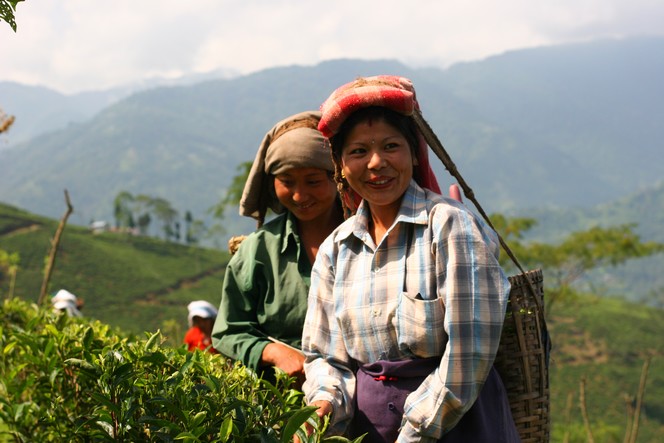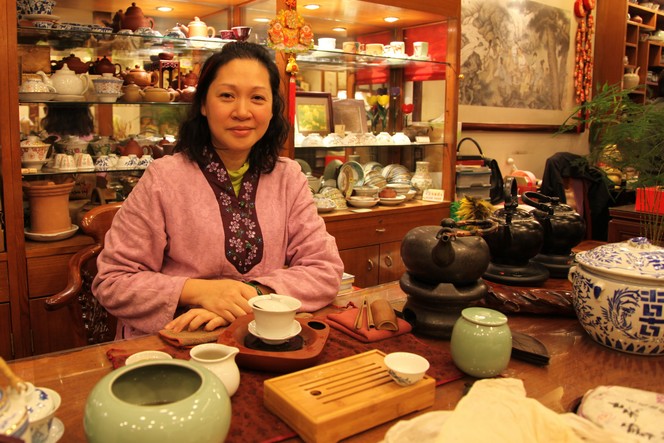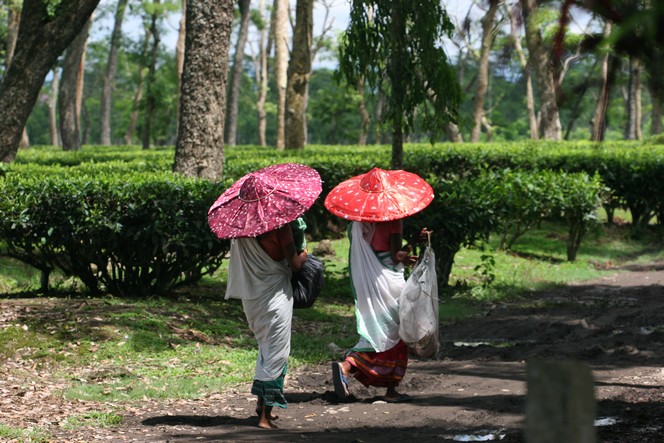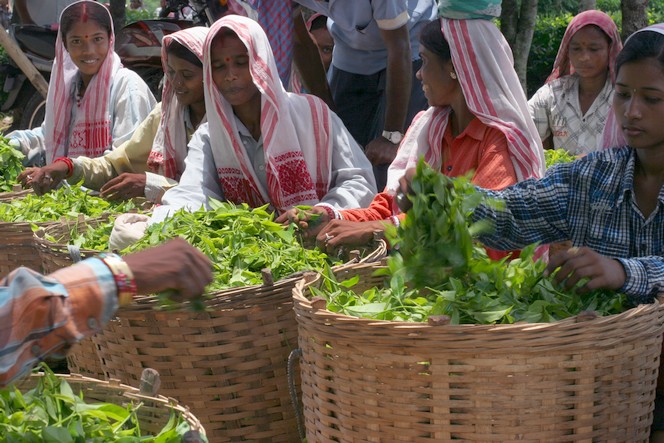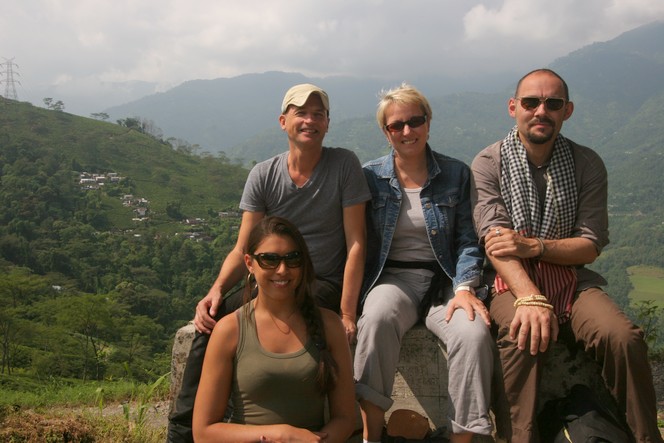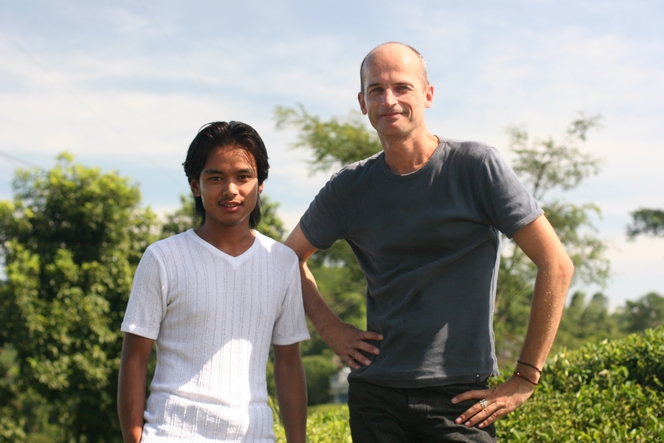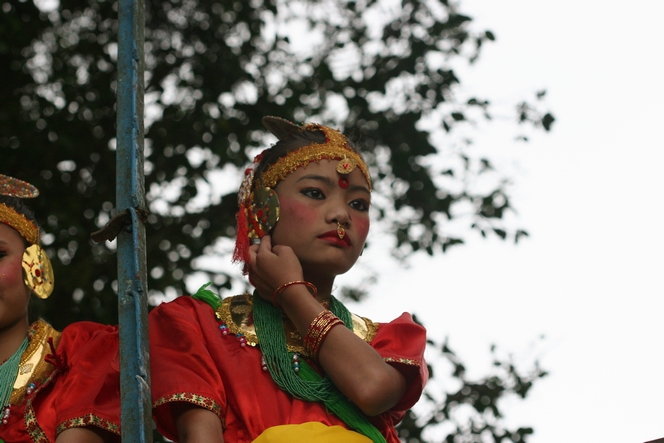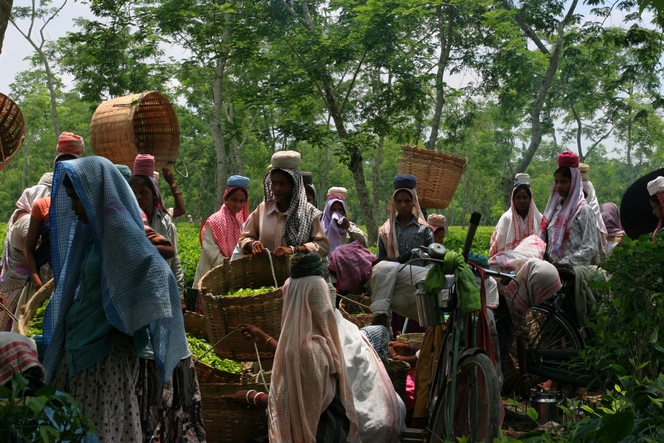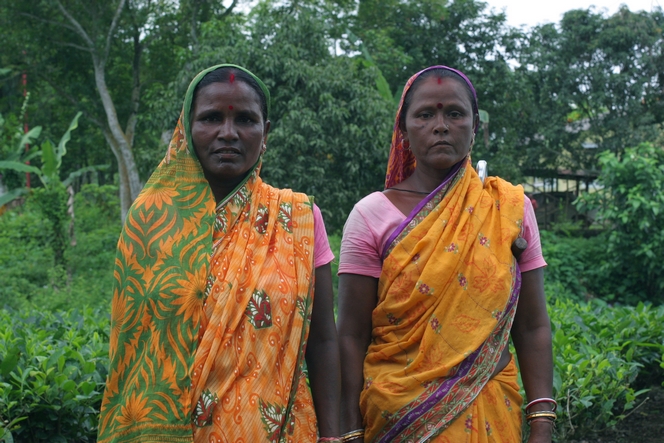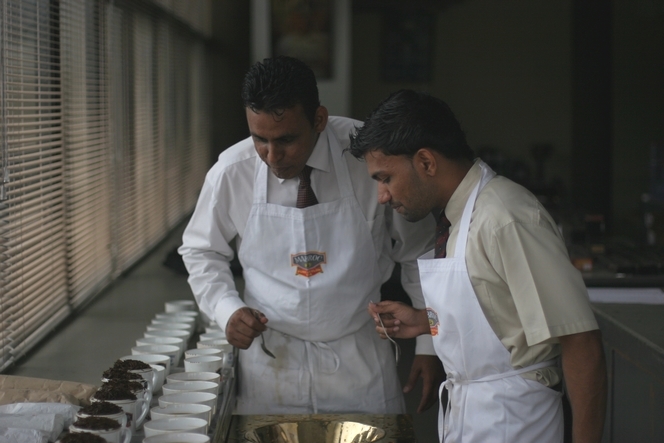Carine Baudry, head of the Tea School, has just returned from Darjeeling. The trip was organised by the school to allow some of the students to visit the plantations and gain a first-hand understanding of how tea is made. Carine and her eight students stayed in the beautiful surroundings of a tea garden and observed every stage in the production process. They met several planters and were able to ask plenty of questions. They also visited Delmas Bari and admired the breathtaking landscapes of this Himalayan region. And there were plenty of opportunities to meet the smiling tea pluckers, like the two women pictured here.
Tea people
Yabo cha fang: a tea house in Hong Kong
When I arrive in Hong Kong I go straight to one of the tea houses; they’re such havens of peace. People go to them to buy old pu er; traditionally, the vendor sits opposite you and, after looking at you for a few moments, puts the water on to boil. They break off a piece of the tea cake, and you talk together about this and that, and about tea of course. You compare the different waters, because the same tea is infused several times over. From one tea to the next, one cake to the next, the minutes – sometimes the hours – pass by, interspersed with the sound of our little gulps: here, tea is drunk from tiny cups, like those used in the Gong Fu Cha.
A student of Yip Wai Man, Eliza Liu has one of these tea houses in the Mongkok district, and teaches her many devoted customers all about tea in an informal manner. Yabo Cha Fang is a friendly place with a special atmosphere, a mysterious charm, like Eliza’s smile which I have captured here, as she crosses her hands in the style of the Mona Lisa.
A little touch of warmth to finish the year off
As we walk the final stretch of the path together in 2011, I want to show you this photo of two tea pluckers in the Assam region who are returning home to their village after work. I think the sight of these women protecting themselves from the sun’s rays beneath their pretty parasols brings a touch of warmth to our grey winter. In this season, Paris lacks bright colours. Apart from the inevitable Father Christmas here and there outside the department stores, you don’t see much red. So it’s funny to think that somewhere else on this earth, people are taking care to protect themselves from the sun, while here, the slightest ray of sun makes us close our eyes and purr like cats.
Red is also the colour of some chillies, so I’ll take this opportunity to tell those who’ve never tasted Assam teas that they develop subtle notes of tobacco, honey and also… spices.
Pluckers checking the quality of their work
At the end of every morning and afternoon during the harvest, the women gather to get their leaves weighed. It’s an opportunity to relax, and everyone talks, unless they want to listen to what the others have to say. Of course, if they find a stranger like myself among them, as they did that day, their tongues wag even faster, accompanied by plenty of laughter.
While listening to their colleagues joking, the pluckers run their hands through the leaves to check the quality of their work. The pretty red and white fabric these women wear on their heads is typical of their region: Assam.
Le Palais des Thés team in Darjeeling
Once a year, I ask some of the senior staff at Le Palais des Thés who have not yet been on a trip with me to pack their bags and accompany me into the tea mountains. There is nothing like a visit to the plantations to compare your theoretical knowledge with reality, and bring a fresh impetus to your learning.
So, in October 2011, here we are: Sarah Daubron (head of customer services), myself, Christine Delétrée (network director) and Paul Roudez (manager of the Rue de l’Annonciation), posing for a group photo by the Tumsong factory in Darjeeling (India).
A thought for Seewan, a long-time friend
A few days ago I was shocked to hear of the brutal death of Seewan. Seewan was my driver for nearly 10 years. Every time I went to Darjeeling he would be there, waiting for me at Bagdogra airport, to take me into the mountains. He was extremely kind and never complained about anything. He was always cheerful, whatever the situation. He knew every area I visited, every tea plantation, every road. Seewan had become a good friend, and his murder has stunned and saddened me a great deal.
Dancer ready to go on stage in Darjeeling
On Sundays, many people gather in Darjeeling’s main square. Sometimes political meetings are held there. At other times, entertainment draws the crowds. Today, just off the famous square, called Chowrasta, I met this dancer who was getting ready to go on stage along with her fellow dancers, adorned with the same jewellery.
Tea pluckers looking like queens
In Assam, as soon as harvesting is finished, the pluckers assemble, men on one side, women on the other, and they set off with their precious baskets to the place where they will be weighed. Some women hold their baskets under their arms, but most rest them on their heads. A rolled-up piece of cloth placed precisely on the crown of the head serves to support the basket. These splendidly colourful fabrics look like crowns, making their wearers look like queens, I think.
In Assam, there is a hierarchy in tea harvesting
There is quite a hierarchy among the people in charge of harvesting tea in Assam. This is true on the large plantations, anyway; there are also independent plots owned by small producers.
On the large plantations, the manager supervises the assistant managers, who organise the babus, whose role is to oversee the work of the sardars, who themselves are responsible for supervising the team of workers.
In this photo taken on the Dufflating plantation you can admire two sardars, who don’t look particularly approachable on first glance. But perhaps they are just reflecting, in their serious expressions, the position of authority they hold.
Tea tasting with Dilan and Vidusha
Last week, in the company of Dilan Wijeyesekera and Vidusha Wakista, I tasted teas from the regions of Dimbula, Uva and Nuwara Eliya, side by side.
Dilan and Vidusha work for the company Mabroc and supply some of our teas from Sri Lanka, which come either from their own plantations or the Colombo auctions.
We also discussed “low growns”, teas from the south of the country that grow at a low altitude, and which have steadily improved in quality over the years. Most low tea plantations don’t use the rotorvane, a machine widely used on high grown plantations, which handles the leaves more roughly than the orthodox procedure.

